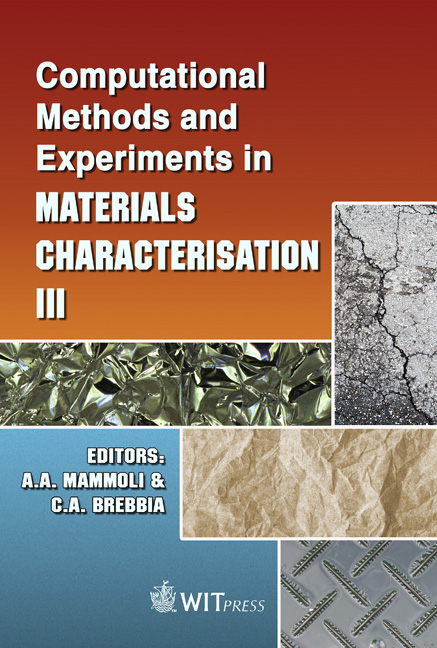Mechanical Compression Tests To Model Timber Structures Behaviour
Price
Free (open access)
Transaction
Volume
57
Pages
6
Published
2007
Size
582 kb
Paper DOI
10.2495/MC070271
Copyright
WIT Press
Author(s)
V. De Luca & D. Sabia
Abstract
The present work aims to improve the definition of the constitutive laws for the wood structure at different grain orientations, by carrying out mechanical compression tests on spruce wood samples. The preliminary tests deal with a compressive uniaxial load. The material tested was clear spruce wood. The samples were 30 mm height, with a cross-section (S1) of 20 mm x 20 mm, for the longitudinal grain orientation (P) and 20 mm height with a cross-section (S2) of 30 mm x 20 mm (according to the UNI-ISO standards) for the orthogonal grain orientation (O). With respect to the 45° (45) angle grain orientation, both S1 and S2 cross-sections were considered, instead. Samples were loaded, for the P orientation, at a cross-head speed of 0.8 mm/min, for the O and 45 orientations at 0.5 mm/min. The load acted radially to the annual rings. For P and O orientations, fifty samples were tried, while for the 45 orientation fifty samples were used for both S1 and S2 cross-sections. The preliminary results for the stress-strain pattern were fitted by a 4th degree polynomial interpolation. In the P orientation the statistical determination coefficient was R2=0.939. The O orientation featured a better statistical significance, R2=0.963. The 45 orientation, however, showed, both for the S1 and S2 cross-sections, R2=0.874 and R2=0.851, respectively, determination coefficients, which are lower than the latter values. In the available scientific literature, the statistical significance of the experimental tests has not proved adequate results, but in this work a good statistical significance has been reached, instead. Keywords: mechanical compression tests, wood models, timber structures.
Keywords
mechanical compression tests, wood models, timber structures.





